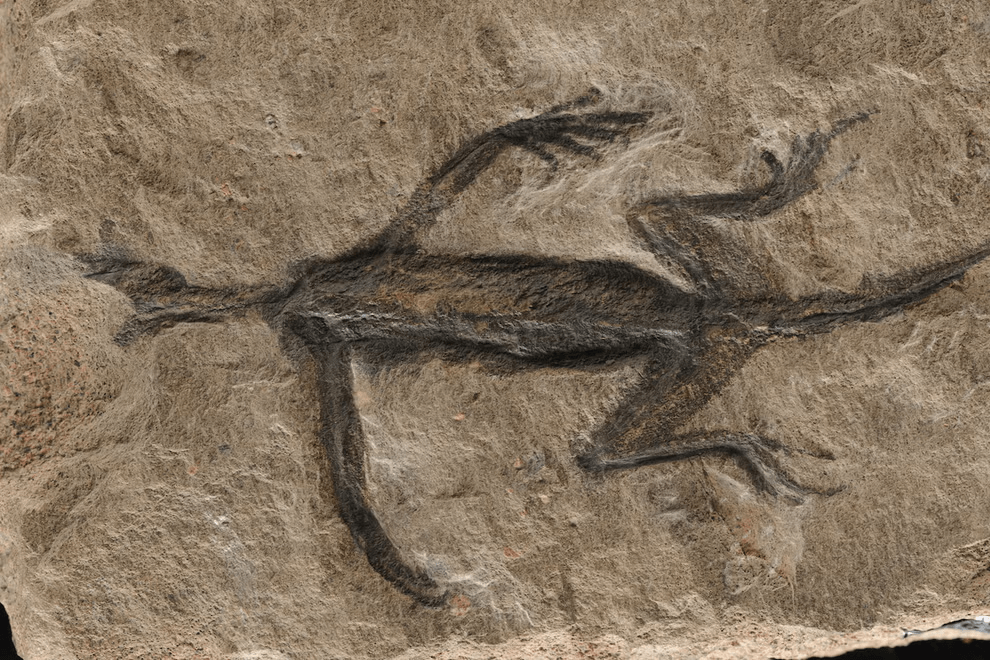Archaeologists were left astonished after discovering that a fossil believed to be 280 million years old is, in fact, a fabrication. Initially thought to contain well-preserved soft tissues, the reptile fossil, named Tridentinosaurus antiquus, has been revealed to have its dark body outline artificially created with black paint.
Discovered in the Italian Alps in 1931, the lizard-like creature, measuring approximately 20cm (8in) in length, was thought to offer valuable insights into reptile evolution. Its apparent remarkable preservation, attributed to a fossilisation process called carbonisation, sparked intrigue among researchers.
The fossil's classification within the reptile group Protorosauria, along with the perceived fossilised skin, garnered attention in scientific circles. However, suspicions arose due to the unusual features of the fossil, prompting further investigation.
A team of researchers from Ireland and Italy employed UV photography to examine the fossil, revealing a coating material on its surface. Subsequent microscopic analysis unveiled that the texture and composition did not match genuine soft tissue fossils, leading to the conclusion that the body outline was painted onto the rock surface.
Published in the journal Palaeontology, the findings caution against the fossil's authenticity and call for careful consideration in future research. While the hindlimb bones and femurs appear to be genuine yet poorly preserved, the discovery underscores the importance of thorough examination in paleontological studies.







